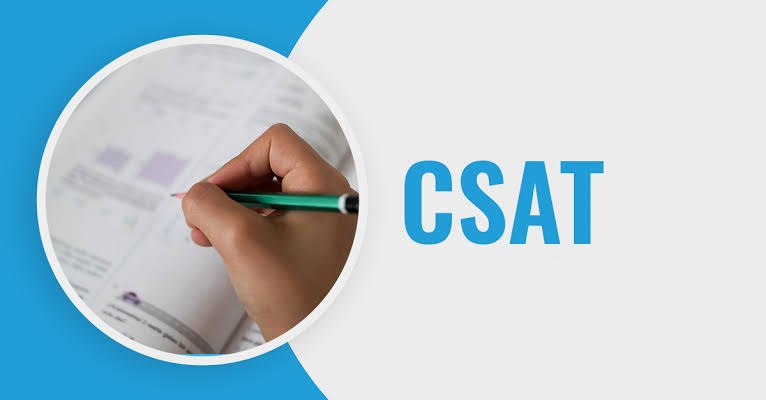The UPSC Civil Services Aptitude Test (CSAT), officially known as General Studies Paper-II, is a crucial qualifying paper in the UPSC Civil Services Preliminary Examination. Introduced in 2011, it tests candidates’ analytical, reasoning, and comprehension skills essential for a career in civil services. With the UPSC Prelims 2026 scheduled for May 25, 2026, understanding the CSAT syllabus in detail is vital for aspirants. This SEO-optimized blog provides a comprehensive breakdown of the UPSC CSAT syllabus 2026, including topic-wise details, exam pattern, marking scheme, and expert preparation tips to help you qualify with ease.
What is UPSC CSAT?
The CSAT is the second paper in the UPSC Prelims, designed to assess aptitude rather than knowledge. It is qualifying in nature, meaning you only need to score a minimum of 33% to advance to the Mains, regardless of your GS Paper-I performance. Over the years, the syllabus has remained consistent, with no major changes announced for 2026. However, the difficulty level can vary, making focused preparation essential.
UPSC CSAT Exam Pattern 2026
Before diving into the syllabus, let’s look at the exam structure:
- Total Marks: 200
- Number of Questions: 80 (All Multiple Choice Questions)
- Duration: 2 hours
- Mode: Offline (Pen and Paper)
- Marking Scheme:
- Each correct answer: 2.5 marks (200 marks / 80 questions)
- Negative Marking: 1/3rd of the marks (approximately 0.83 marks) deducted for each wrong answer
- No penalty for unanswered questions
- Qualifying Marks: 33% or 66.67 marks
- Language: Bilingual (English and Hindi)
- Nature: Qualifying; marks not counted in the final merit but mandatory to clear
The paper emphasizes speed, accuracy, and time management, as negative marking can impact your score significantly.
Detailed UPSC CSAT Syllabus 2026: Topic-Wise Breakdown
The official UPSC CSAT syllabus is divided into seven broad areas, with questions at Class X level for numeracy and data interpretation. Below is a detailed topic-wise breakdown based on the official notification and analysis of previous years’ papers.
1. Comprehension
- Focuses on reading and understanding passages from diverse topics like social issues, economy, science, and environment.
- Sub-Topics:
- Inference drawing
- Summarizing passages
- Identifying main ideas and supporting details
- Critical analysis of arguments
- Weightage: Approximately 25-30 questions (High emphasis; often 30-35% of the paper)
2. Interpersonal Skills Including Communication Skills
- Tests verbal and non-verbal communication abilities.
- Sub-Topics:
- Analogies and interpretations
- Critical reasoning
- Emotional intelligence scenarios
- Effective communication in administrative contexts
- Weightage: 5-10 questions (Integrated with other sections)
3. Logical Reasoning and Analytical Ability
- Assesses the ability to think logically and analyze patterns.
- Sub-Topics:
- Sequence and Series
- Coding and Decoding
- Blood Relations
- Venn Diagrams
- Distance and Directions
- Seating Arrangements
- Puzzles
- Syllogisms
- Statements and Conclusions
- Assumptions and Arguments
- Cause and Effect
- Calendars and Clocks
- Cubes and Dice
- Analytical Reasoning
- Eligibility Tests
- Inserting Missing Characters
- Situation Reaction Tests
- Number Ranking and Time Sequence Tests
- Weightage: 20-25 questions (Major section; 25-30% of the paper)
4. Decision Making and Problem Solving
- Evaluates ethical and practical decision-making in hypothetical situations.
- Sub-Topics:
- Ethical dilemmas
- Problem-solving scenarios (administrative and real-life)
- No negative marking in this section (as per previous patterns)
- Weightage: 5-10 questions (Focus on judgment; often integrated with reasoning)
5. General Mental Ability
- Tests overall cognitive skills through mathematical and logical problems.
- Sub-Topics:
- Profit and Loss
- Mixture and Alligations
- Time and Work
- Time and Distance
- Geometry
- Mensuration and Area
- Partnerships
- Clocks
- Dice
- Probability
- Trains, Boats, and Streams
- Simple and Compound Interest (SI & CI)
- Work and Wages
- Pipes and Cisterns
- Permutations and Combinations (P & C)
- Weightage: 10-15 questions (Overlaps with numeracy)
6. Basic Numeracy (Class X Level)
- Covers fundamental mathematical concepts.
- Sub-Topics:
- Number Systems
- LCM and HCF
- Averages
- Fractions
- Ratio and Proportion
- Percentages
- Simple and Compound Interests
- Rational Numbers and Ordering
- Square Roots and Cube Roots
- Set Theory
- Decimal Fractions
- Simplification
- Surds and Indices
- Divisibility Rules
- Remainder Theorem
- Weightage: 15-20 questions (Core quantitative section; 20-25% of the paper)
7. Data Interpretation (Class X Level)
- Involves analyzing data from visual representations.
- Sub-Topics:
- Pie Charts
- Bar Graphs
- Line Graphs
- Tables
- Data Sufficiency
- Combined Data Sets
- Weightage: 10-15 questions (Often combined with numeracy; 10-15% of the paper)
Note: The weightage is approximate, based on trends from 2011-2025 papers. Current affairs are not directly part of CSAT but can appear in comprehension passages.
Changes in UPSC CSAT Syllabus for 2026
As per the latest information, there are no significant changes to the CSAT syllabus for 2026. It remains aligned with the 2011 introduction, focusing on aptitude at Class X level. Aspirants should check the official UPSC notification (expected in February 2026) for any minor updates.
Preparation Tips for UPSC CSAT 2026
Clearing CSAT requires consistent practice and strategic study. Here are expert tips:
- Understand the Syllabus: Map out all topics and identify your strengths/weaknesses.
- Create a Study Plan: Dedicate 1-2 hours daily; allocate more time to weak areas like numeracy or reasoning.
- Practice Regularly: Solve at least 50-100 questions daily. Focus on timed mocks to build speed.
- Mock Tests and Previous Papers: Analyze 10-15 years’ papers (2011-2025) to understand patterns. Aim for 100+ marks in practice.
- Time Management: Practice solving the paper in 90 minutes initially, then reduce to 120 minutes.
- Focus on Accuracy: Avoid guesswork due to negative marking; target 50-60 correct answers.
- Reading Comprehension: Read newspapers/editorials daily to improve speed and understanding.
- Decision Making: Practice ethical scenarios; no negative marking here, so attempt all.
- Stay Updated: While static, comprehension may include recent topics—follow reliable sources.
- Common Mistakes to Avoid: Over-relying on coaching; neglecting basics; ignoring negative marking.
Recommended Books for UPSC CSAT Preparation
- General: CSAT Manual by Tata McGraw Hill or Arihant Publications
- Reasoning: Analytical Reasoning by M.K. Pandey; Verbal and Non-Verbal Reasoning by R.S. Aggarwal
- Numeracy: Quantitative Aptitude by R.S. Aggarwal; Fast Track Objective Arithmetic by Rajesh Verma
- Comprehension: English Comprehension by Wren & Martin; Previous Years’ Solved Papers
- Mock Tests: CSAT Paper-II by TMH or Pearson

Hi, I’m Varun Pathak, the founder of TheSarkariNaukri.com—a dedicated platform for the latest updates on government jobs (Sarkari Naukri) in India. With years of experience curating reliable information on job vacancies, admit cards, exam results, and preparation strategies, I help thousands of aspirants navigate the competitive world of public sector opportunities. Passionate about job security, career growth, and empowering freshers for roles like IAS, IPS, and PSU positions, I update the site regularly with actionable insights for 2025 and beyond. Let’s connect to turn your career dreams into reality!
